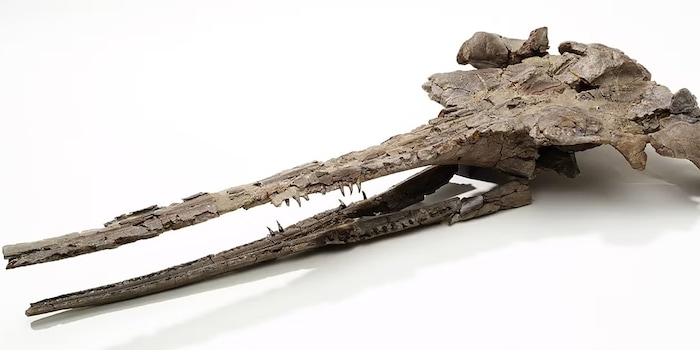
European dolphin had super hearing
The find lay dormant in the museum archives for decades: a primordial dolphin with super hearing. A study of the fossil shows that it is a new species that possessed astonishing abilities.
The private collector Jürgen Pollerspöck found a well-preserved fossil skull back in 1980, which he handed over to the Bavarian State Collection of Palaeontology and Geology in Munich for better preparation and storage. The fossil then lay dormant there for decades before a team led by Gertrud Rössner from the State Collection finally took it in - and discovered something astonishing, as the working group reports in the "Journal of Vertebrate Paleontology": The fossil is a previously unknown species of dolphin that lived 22 million years ago in a shallow sea that covered what is now the region of Upper Austria.
The species, named in honour of the original finder Romaleodelphis pollerspoecki, already had excellent hearing in the high-frequency range, as computer tomography images of the skull show. Although the skull was severely crushed during the fossilisation process, many features were preserved, such as a bony labyrinth inside it, which is considered to be part of the sense of hearing. The long snout with over 102 uniform teeth is also remarkable. According to Rössner and Co, this is one of the oldest known toothed whales that had a sense of hearing, such as that found in harbour porpoises today. This enabled the marine mammals to communicate in frequency ranges that were outside the previously known hearing range of their predators. There may also be a connection in the development with the dolphin's typical ability to echolocalise.
The closest relatives of Romaleodelphis pollerspoecki lived in the north-eastern Pacific and off the coasts of South America. The "Austrian" dolphin is therefore the first representative of these primitive marine mammals to be found in Europe: So far, only this one specimen exists in the hands of science. The shallow estuary in which Romaleodelphis pollerspoecki moved during the Miocene extended to the north of today's Alps, which began to rise at that time. Fossils from this period show abundant life from various protozoa, algae, mussels, snails, squid relatives and fish, which the dolphin most likely hunted for.
Spectrum of Science
We are partners of Spektrum der Wissenschaft and want to make well-founded information more accessible to you. Follow Spektrum der Wissenschaft if you like the articles.
Original article on Spektrum.deExperts from science and research report on the latest findings in their fields – competent, authentic and comprehensible.